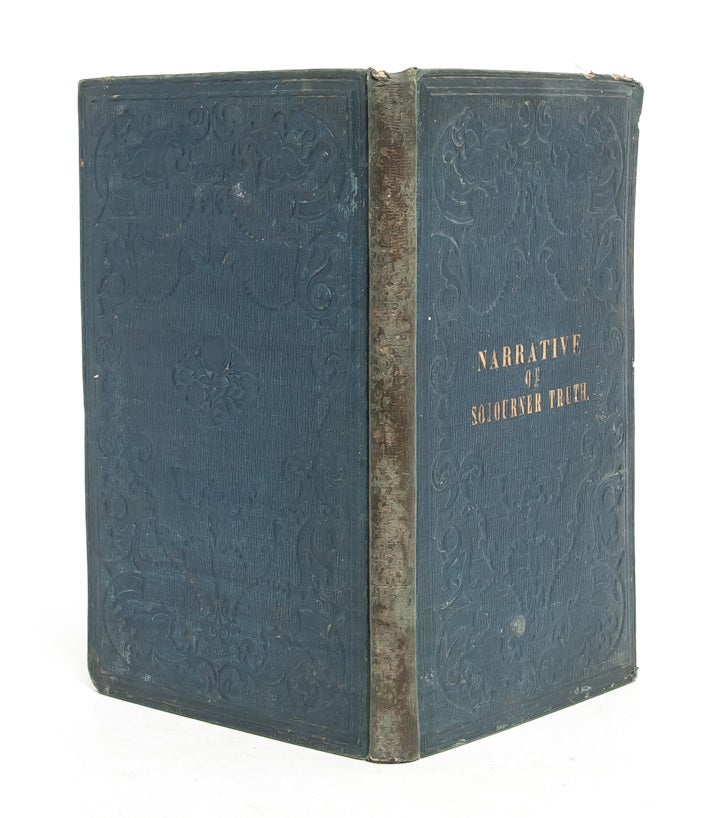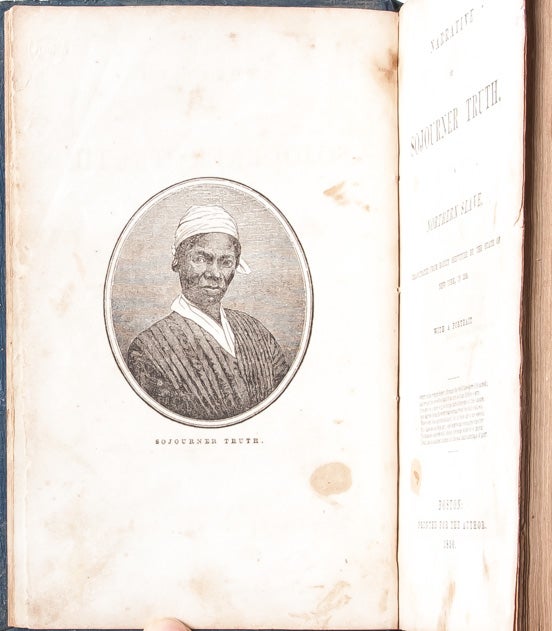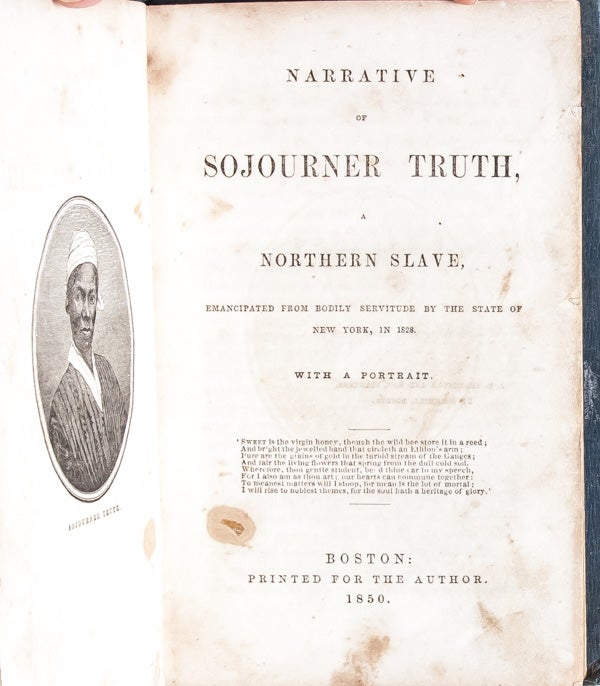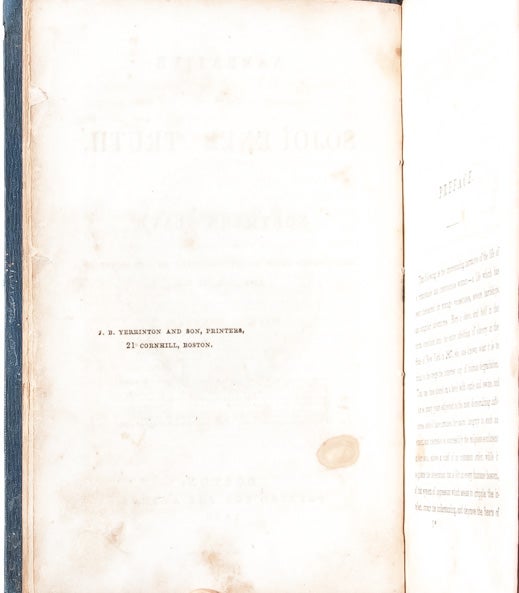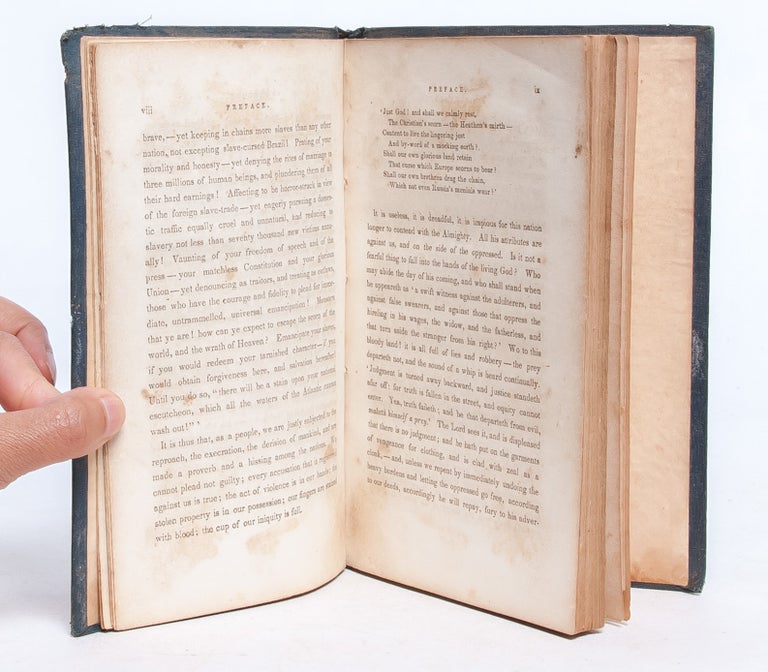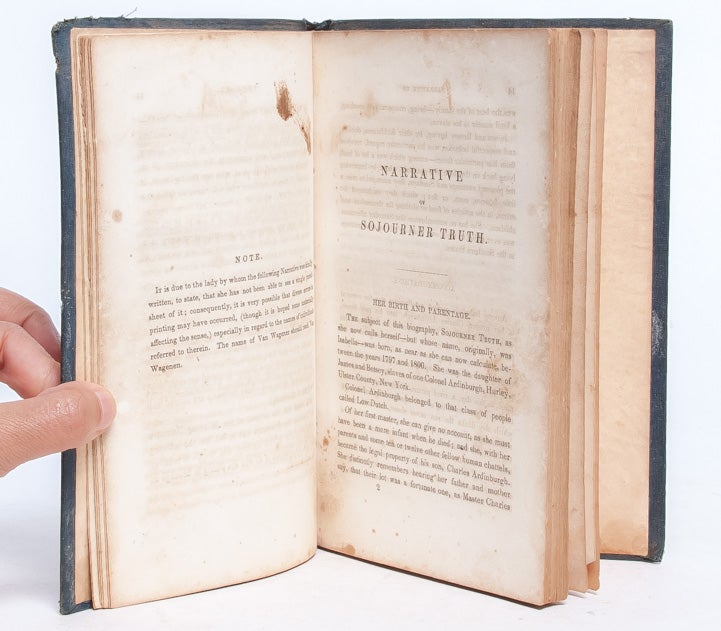The Narrative of Sojourner Truth, a Northern Slave Emancipated from Bodily Servitude by the State of New York in 1828
Boston: Printed for the Author, 1850.
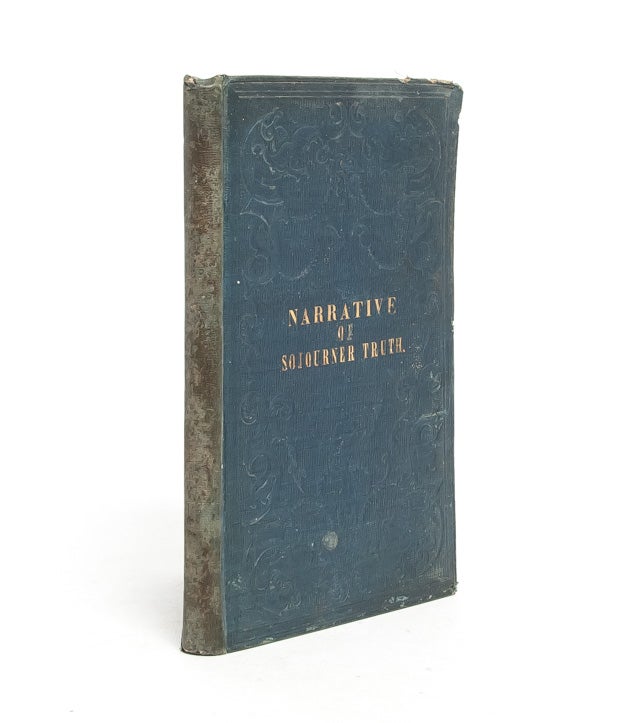

The Narrative of Sojourner Truth, a Northern Slave Emancipated from Bodily Servitude by the State of New York in 1828
Boston: Printed for the Author, 1850. First edition. Original blue publisher's cloth binding stamped in gilt and blind. Sunning to the spine and some rubbing to extremities, but in all an excellent copy. Bookseller's ticket of the Plantation Bookshop, Natchez Mississippi to the front pastedown. Binder's blindstamp to top corner of front endpapers. Scattered foxing throughout, largely concentrated at the preliminaries; some marginal smudging not affecting text. Measuring 190 x 120mm and collating xi, [1], 144: complete, including the frontis portrait. This important autobiographical work has become a true rarity that has made only 5 appearances at auction in the last 30 years.
Sojourner Truth is an icon of American equality movements, as a self-emancipated person who used her freedom to pursue the joint causes of abolition and suffrage. The present is her autobiography, documenting Truth's birth into bondage, her escape to freedom, and her rise to activism. However, "though the book was ultimately distributed in the context of abolitionist agitation as antislavery notherners responded with anger and alarm to the Fugitive Slave Act, it is not a conventional 'slave narrative'...her Narrative ultimately went well beyond and often clashed with the standard abolitionist-sponsored story" (Humez). Indeed, in telling her story Truth pushed the limits of an abolitionist movement struggling with women's role in it. Truth's narrative took a stand on this issue, calling unquestionably for intersectional action, and drawing attention to connections among the plight of slaves and that of women. Written in collaboration with white ally Olive Gilbert --making it what scholars now call a "facilitated" autobiography -- the book was released when Truth was over fifty years old, already a public figure and a free woman for over a quarter of a century. This, in a certain sense, gave her the authority to shape her own message, regardless of the expectation that she focus solely on the violence of slavery. Following the success of the book, Truth would continue speaking; and within a year she would deliver her most famous speech, Ain't I A Woman, which stands as an example of intersectional feminism linking race and gender together in the call for equality. An incredibly important work by an incredibly important historical figure.
Smithsonian 100 Most Important Americans. Feminist Companion 1098. (Item #2934)

